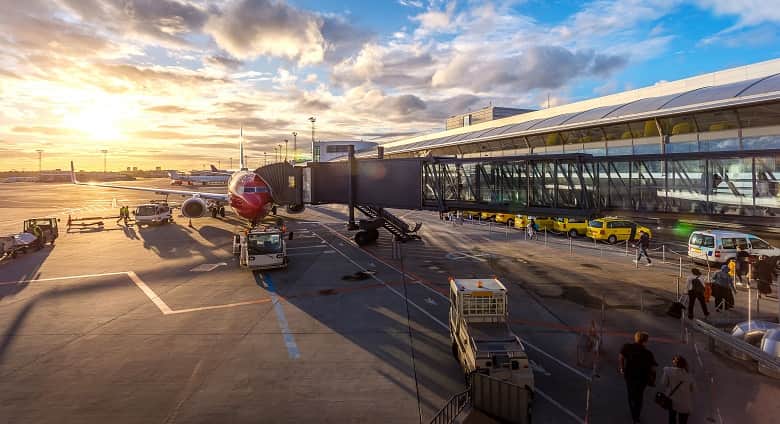Airport staff has demanding jobs ensuring the efficient operation of airports and providing high-quality service to passengers. It isn’t just about dealing with travelers, flight queries, and emergencies but also about the working of essential equipment. Airport staff rely on various essential equipment and tools to fulfill their many responsibilities. Here are five critical pieces of equipment airport staff should have handy for effective work.
Communication Devices
Efficient communication is essential in the fast-paced airport environment. Walkie-talkies or two-way radios allow airport staff to communicate instantly with colleagues over long distances and in noisy airport areas. Suppose passengers have queries about domestic vs. international flights.
These lines usually are at the opposite ends of airports. What happens, then? Staff needs access to these communication devices to contact those on the other side for urgent responses. Staff can relay information, request assistance, coordinate operations, and address issues. For instance, ground staff handling aircraft can radio terminal staff about delays or gate changes.
Mobile phones and smartphones also ensure airport staff stays connected to receive important updates from supervisors and colleagues. Many staff uses special multi-channel radios on reserved frequencies to facilitate effective communication within their operational area. Some larger airports even have internal telephone networks for communication between departments.
Safety Equipment
High-visibility vests or jackets enhance the visibility and safety of airport staff in the dynamic airport environment. The bright colors and reflective strips help others spot and avoid airport staff easily. Staff handling operations on aprons, runways, and baggage areas must wear these vests. Personal protective equipment (PPE) such as gloves, safety goggles, masks, and helmets shields airport staff from workplace hazards. Staff dealing with hazardous cargo, refueling aircraft, de-icing planes, or repairing equipment must wear PPE tailored to their jobs. Safety harnesses and fall arrestors protect staff working at heights like on top of fuel trucks, aircraft, or terminal roofs.
Baggage Handling Equipment
Luggage carts and dollies help airport staff to transport passenger bags efficiently between the ticket counter, security checkpoint, baggage claim, and aircraft. Different types are optimized for specific purposes. Carts with multiple levels and straps keep bags secure. Large cargo dollies efficiently move heavy freight and oversized baggage.
Baggage handling systems, including conveyor belts, chutes, and carousels, automatedly route bags between areas, reducing staff workload. Baggage scanners and X-ray machines are critical for securing luggage before aircraft loading. Regular maintenance and testing ensure these scanners provide clear images for detecting prohibited items. Failed scanners can severely impact baggage processing and flight departures.
Cleaning and Maintenance Equipment
Clean and functioning facilities are essential for passenger comfort, safety, and airport productivity. Airports are quite often never empty. There are children, adults, and elderly traveling always, which means quite often, with the traffic also comes litter.
To ensure a mess doesn’t build up, cleaning equipment is always required, or at least at regular intervals. Industrial cleaning equipment like scrubbers, polishers, and disinfecting foggers help sanitize seating areas, washrooms, and terminals.
Brooms, mops, and cleaning solutions enable manual cleaning. Routine maintenance prevents minor issues from becoming big problems. Tools like screwdrivers, wrenches, pliers, and voltmeters allow staff to repair seats, lighting, baggage systems, or check electrical equipment. Outdoor maintenance vehicles keep aprons and roads clear and serviceable.
Navigation and Transportation Tools
Detailed airport maps and planning directories help staff navigate the airport’s facilities. Multiple times a day, you will find passengers in a rush that have lost their way or children that may have accidentally been separated from their parents and are in distress.
Digital displays and announcement systems advise passengers of gates, baggage claims, and ground transport options. Golf carts, electric buggies, and scooters offer quick transport for staff over long distances and can be extremely helpful for older people. These vehicles require charging at a ground power unit when idle. Pushback tugs and two tractors maneuver aircraft and baggage carts into position. De-icing trucks spray aircraft for safe takeoff in icy weather.
Conclusion
Airport staff have essential roles in ensuring safety, security, and efficiency. Equipped with proper communication devices, safety equipment, baggage and cleaning tools, vehicles, and system infrastructure, airport staff can fulfill their responsibilities. These resources empower staff to serve passengers and all airport stakeholders exceptionally well in a dynamic operational environment.
